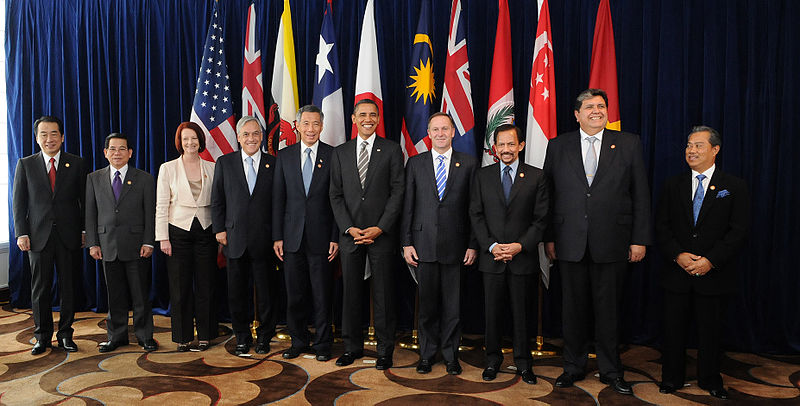TPP, ASAP
 In spite of the rough economic times, it seems nothing can stop the expansion of American free trade agreements (FTAs) across the globe. The Obama administration has promised that the recent passage of FTAs with Panama, Colombia, and South Korea will help boost American exports, substantially increase our GDP, and potentially support thousands of jobs.
And the buck doesn’t stop there. At the recent Asia-Pacific Economic Cooperation (APEC) Summit in Honolulu, President Obama continued his march towards massive free trade expansion, and the most prominent headlines from the summit had to do with a the radical new proposal for a mega free trade area—the Trans-Pacific Strategic Economic Partnership (TPP).
In spite of the rough economic times, it seems nothing can stop the expansion of American free trade agreements (FTAs) across the globe. The Obama administration has promised that the recent passage of FTAs with Panama, Colombia, and South Korea will help boost American exports, substantially increase our GDP, and potentially support thousands of jobs.
And the buck doesn’t stop there. At the recent Asia-Pacific Economic Cooperation (APEC) Summit in Honolulu, President Obama continued his march towards massive free trade expansion, and the most prominent headlines from the summit had to do with a the radical new proposal for a mega free trade area—the Trans-Pacific Strategic Economic Partnership (TPP).
The potential seems limitless: Australia, New Zealand, Singapore, Brunei, Malaysia, Vietnam, Chile, Peru, and the United States have already engaged in negotiations. At the APEC Summit, Japanese Prime Minister Yoshihiko Noda made the stunning announcement that Japan would also take a seat at the negotiating table. It is also highly likely that other economic heavyweights—like Canada and Mexico—may also join.
If it can be pulled off, the TPP would be the largest free trade area in the world, with potentially dozens of vast and diverse signatories tied together economically, financially, and politically. NAFTA and the European Union would seem like quaint gnomes in comparison. However, it’s a big if. Vested political interests in all of these countries may prevent the birth of such the colossal free trade bloc. Just look at the United States, where farming, labor unions, and domestic manufacturing constituencies balk at any mere mention of expanding free trade at the expense of American livelihoods at home. No matter how many times President Obama promises that free trade leads to job creation, it is unlikely that such voters (and their representatives in Congress) will ever be on board the USS Trans-Pacific.
Domestic political barriers may be even more insurmountable in Japan, traditionally one of the most protectionist countries in the world. Although the free trade agreement would be a boon to Japan’s already globally competitive automobile and high technology sectors, the prospect of lowering the tariff on rice (and potentially losing the rustic and traditional farming villages of the countryside) remains an unpopular proposition.
Of course, the elephant (or rather the giant panda) in the room is a rising and increasingly intransigent China. With the exciting news about the TPP coupled with an increasingly firm stance from the US and its allies regarding the South China Sea disputes, China has taken a political beating in recent weeks. Although China is not forbidden from joining the TPP negotiations, it appears that the Chinese central government has already decided it doesn’t want to come to the party. Expect the Chinese to oppose what they perceive as an expansion of American hegemony into their neighborhood.
The stakes are high, and no one knows whether such an ambitious plan will ever be fully carried out. However, the prospect of a massive and wealthy union straddling the world’s biggest ocean is exciting. It is equally exciting to see the global economic stall used as a catalyst not for protectionism and xenophobia, but for deeper integration and globalization. The reforms and transformations which are concomitant with such a bold free trade initiative may also be what is needed to wake giants like the US and Japan from their stupor. We must try. We can succeed.
